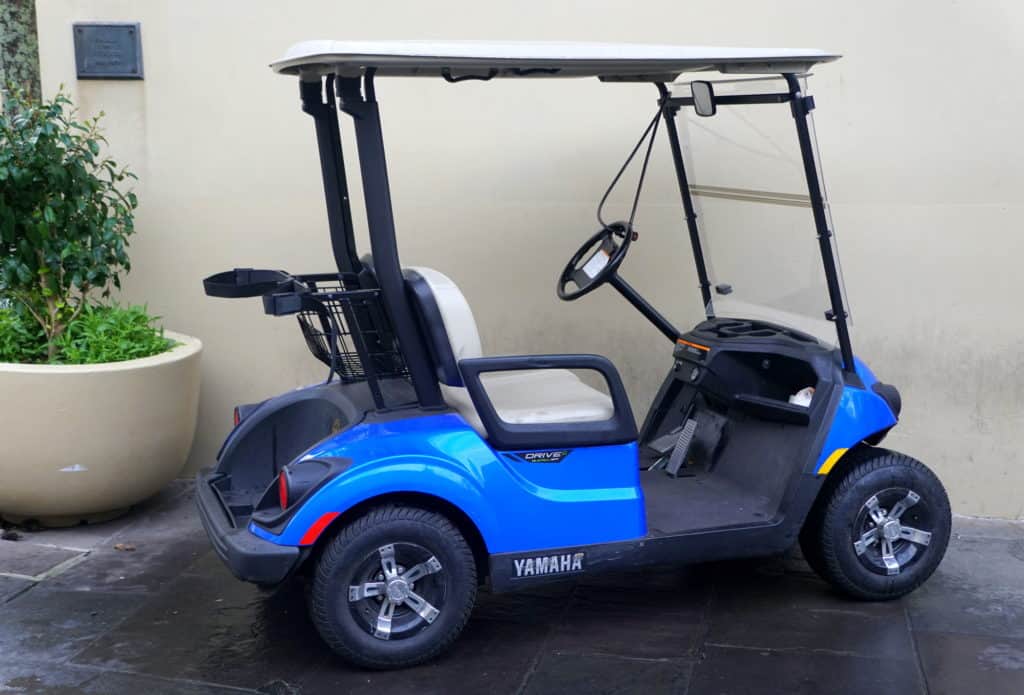Why is My Golf Cart Smoking
As a golf cart owner, it can be alarming to witness smoke emanating from your beloved vehicle. A smoking golf cart not only raises safety concerns but also indicates potential underlying issues that require immediate attention. Understanding the reasons behind your golf cart smoking is essential for diagnosing the problem accurately and taking appropriate measures to resolve it.
In this comprehensive guide, we will delve into the causes of a smoking golf cart, exploring the key components of the vehicle and examining the common culprits behind this unsettling issue. By gaining insight into the potential sources of smoke, you will be better equipped to identify and address the specific problem affecting your golf cart.
From engine-related factors to exhaust system malfunctions and electrical system abnormalities, we will explore the various aspects that can lead to a smoking golf cart. Through a detailed examination of these causes, we aim to provide you with the knowledge and guidance necessary to diagnose and resolve the issue effectively.
Whether it’s overheating, oil leaks, exhaust system damage, or electrical system issues, we will equip you with practical solutions and actionable steps to address the smoking problem in your golf cart. By implementing the appropriate measures, you can ensure the safety, performance, and longevity of your vehicle, allowing you to enjoy worry-free rides on the golf course.
Join us as we uncover the mysteries of why your golf cart is smoking and embark on a journey to restore its optimal functionality. Together, let’s diagnose, resolve, and prevent smoking issues, ensuring a smoke-free and enjoyable golfing experience.

Understanding Golf Carts
Before delving into the causes of smoking in golf carts, let’s gain a better understanding of these vehicles and their key components. Golf carts typically consist of an engine or battery, transmission, and an exhaust system. There are two main types of golf carts: gas-powered and electric.
Gas-powered golf carts are equipped with engines that rely on gasoline to generate power. On the other hand, electric golf carts operate using batteries as their source of energy. It’s important to grasp these fundamental differences as the causes of smoking may vary depending on the type of golf cart you own.
Causes of Smoking in Golf Carts
Smoke emanating from a golf cart can be indicative of underlying issues that require attention. Understanding the potential causes can help you identify and address the problem effectively. Let’s examine the possible reasons for smoking in both gas-powered and electric golf carts.
Gas-Powered Golf Carts
Gas-powered golf carts rely on internal combustion engines, which can be prone to certain issues that may result in smoke. Here are some common causes to consider:
- Engine-related issues: Problems with the engine can lead to smoking in gas-powered golf carts. These issues may include:
- Oil leakage: If there is a significant oil leak, it can result in the engine burning oil and producing smoke.
- Overheating: Excessive heat due to insufficient cooling can cause smoke to emanate from the engine.
- Faulty carburetor: A malfunctioning carburetor can lead to an improper fuel-to-air mixture, resulting in smoke.
- Exhaust system problems: The exhaust system plays a crucial role in carrying exhaust gases away from the engine. Issues within the exhaust system can cause smoking, such as:
- Clogged muffler: A clogged or restricted muffler can lead to smoke backing up into the engine and being emitted through various openings.
- Cracked exhaust manifold: A cracked exhaust manifold can allow exhaust gases to escape, leading to smoke.
Electric Golf Carts
Electric golf carts utilize battery-powered electrical systems. While they are generally less prone to smoking issues, certain factors can still contribute to smoke emission. Consider the following causes specific to electric golf carts:
- Battery-related issues: Problems with the battery can result in smoking. These issues may include:
- Overcharging: Overcharging the battery can cause it to overheat, leading to smoke.
- Faulty cells: A malfunctioning cell within the battery pack can generate smoke during operation.
- Electrical system problems: Issues within the electrical system can also contribute to smoking in electric golf carts. These problems may include:
- Short circuits: Faulty wiring or electrical components can cause short circuits, resulting in smoke.
- Melting cables: Excessive heat generated due to loose or damaged connections can cause cables to melt and emit smoke.
Identifying the specific cause of smoking in your golf cart is crucial to implementing the appropriate troubleshooting measures. Let’s explore some steps you can take to address the smoking issue based on the type of golf cart you own.
Troubleshooting Gas-Powered Golf Carts
When dealing with a gas-powered golf cart emitting smoke, there are several steps you can take to diagnose and resolve the problem. Consider the following troubleshooting steps:
- Checking engine oil levels and quality: Begin by inspecting the engine oil levels and quality. Low oil levels or contaminated oil can contribute to smoking. If the oil is low, add the recommended amount of oil specified by the manufacturer. If the oil appears dirty or contaminated, consider changing the oil and replacing the oil filter.
- Inspecting the carburetor and air filter: The carburetor plays a crucial role in regulating the fuel-to-air mixture. Inspect the carburetor for any signs of damage or blockages. Clean or replace the carburetor if necessary. Additionally, check the air filter and clean or replace it if it is dirty or clogged.
- Assessing the exhaust system for blockages or leaks: Examine the exhaust system components, including the muffler and exhaust manifold, for any blockages or leaks. Clear any obstructions in the muffler and repair or replace any damaged parts in the exhaust system.
- Verifying the cooling system’s functionality: Proper cooling is essential to prevent overheating and smoking in gas-powered golf carts. Ensure that the cooling system, including the radiator and coolant levels, is functioning correctly. If necessary, flush and replace the coolant and check for any leaks or damaged cooling system components.
- Identifying and fixing faulty spark plugs: Faulty or worn-out spark plugs can cause irregular combustion, leading to smoking. Inspect the spark plugs and replace any damaged or worn-out plugs. Ensure they are properly gapped according to the manufacturer’s specifications.
- Seeking professional help if issues persist: If the smoking issue persists despite troubleshooting efforts, it’s advisable to seek professional assistance from a qualified golf cart mechanic or service center. They will have the expertise and specialized equipment to diagnose and address more complex issues.
By following these troubleshooting steps, you can often identify and resolve smoking issues in gas-powered golf carts. However, if you own an electric golf cart, the troubleshooting process will differ. Let’s explore the steps to troubleshoot smoking in electric golf carts.
Troubleshooting Electric Golf Carts
Electric golf carts have different components and systems that require specific troubleshooting approaches. If you notice smoke emanating from your electric golf cart, consider the following steps to diagnose and rectify the issue:
- Examining the battery voltage and connections: Check the battery voltage using a multimeter to ensure it is within the recommended range. Loose or corroded battery connections can lead to smoking, so inspect the terminals and cables for any signs of damage or poor connections. Clean and tighten the connections if necessary.
- Testing individual battery cells: If your electric golf cart utilizes a battery pack with multiple cells, test each cell’s voltage and performance. A faulty cell can cause smoking, so identify and replace any malfunctioning cells to rectify the issue.
- Inspecting the charger for malfunctions: The charging system plays a vital role in maintaining the battery’s health. Inspect the charger for any malfunctions or abnormalities. Ensure that the charger is compatible with your golf cart’s battery specifications and that it is charging the battery properly.
- Checking the electrical system for damaged components: Examine the electrical system, including wiring harnesses, switches, and controllers, for any damaged or worn-out components. Replace any faulty parts and ensure all connections are secure.
- Evaluating the motor and controller functionality: The motor and controller are integral to the operation of electric golf carts. Inspect these components for any signs of damage or overheating. If necessary, consult a professional technician to diagnose and repair motor or controller-related issues.
- Seeking professional assistance if problems continue: If the smoking issue persists or if you are unsure about troubleshooting electric golf carts, it’s advisable to seek professional assistance from a qualified electric golf cart technician. They have the expertise and specialized knowledge to diagnose and address complex electrical issues.
Taking the appropriate troubleshooting steps for your specific type of golf cart can help identify and resolve smoking issues. However, it’s important to note that prevention is always better than cure. By implementing preventive measures, you can minimize the chances of encountering smoking problems in your golf cart. Let’s explore some practical steps to prevent smoking and ensure the optimal performance of your golf cart.
Preventive Measures
Regular maintenance and adherence to best practices can go a long way in preventing smoking issues in your golf cart. Consider the following preventive measures:
- Regular maintenance routines: Follow the manufacturer’s recommended maintenance schedule for your golf cart. This includes routine inspections, fluid checks, and component replacements as needed. Regular maintenance helps identify and address potential issues before they escalate into major problems.
- Proper storage and charging practices: If you have an electric golf cart, store it in a cool and dry location to prevent excessive heat buildup. Avoid leaving the cart exposed to extreme temperatures or direct sunlight for extended periods. Additionally, adhere to the recommended charging practices, such as using the correct charger and avoiding overcharging.
- Ensuring proper ventilation during operation: Proper airflow and ventilation are essential for gas-powered golf carts. Avoid covering or obstructing the engine area, as it may lead to overheating and smoking. Allow sufficient air circulation to keep the engine cool during operation.
- Following manufacturer guidelines: Always follow the manufacturer’s guidelines and recommendations for your specific golf cart model. This includes using the recommended fuel, oil, and other fluids. Adhering to these guidelines ensures optimal performance and reduces the risk of smoking issues.
- Promptly addressing any detected issues: If you notice any unusual sounds, smells, or performance issues with your golf cart, address them promptly. Ignoring or neglecting these warning signs can result in more severe problems, including smoking. Consult the manufacturer’s manual or seek professional assistance to diagnose and resolve any detected issues.
By incorporating these preventive measures into your golf cart maintenance routine, you can minimize the likelihood of encountering smoking problems. Regular upkeep and proactive care will help extend the lifespan of your golf cart while ensuring a safer and more enjoyable experience.
Conclusion
Smoking in a golf cart can be an alarming issue, but by understanding the potential causes and following the appropriate troubleshooting steps, you can address the problem effectively. Whether you own a gas-powered or electric golf cart, it’s important to diagnose the specific cause and take the necessary actions to resolve the smoking issue.
Remember to perform regular maintenance, including checking oil levels, inspecting components, and following manufacturer guidelines. Additionally, implement preventive measures such as proper storage, ventilation, and prompt attention to any detected issues. By prioritizing maintenance and preventive care, you can ensure the optimal performance and longevity of your golf cart.
If troubleshooting efforts prove challenging or the smoking issue persists, it’s always advisable to seek professional assistance. A qualified golf cart mechanic or technician will have the expertise to diagnose and address complex issues, ensuring the continued enjoyment of your golf cart for years to come.





